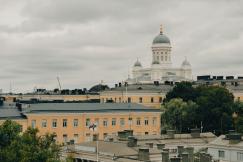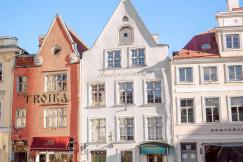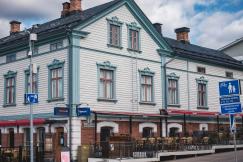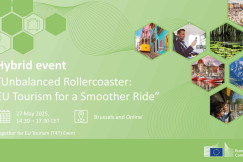Best practices
22 July 2025
Nattours: Enhancing urban nature tourism through digital innovation
Best practices
22 July 2025
Ecotourism
Education tourism
Urban/city tourism
+10 more
Login / create an account to be able to react
-
9

Concluded in October 2018, the NATTOURS project promoted sustainable nature tourism between Tallinn and Helsinki by developing digital tools and eco-friendly attractions, with support from EU funding.
Stockholm Environment Institute
City of Helsinki Environment Centre
Environment Department of Tallinn City Government
SEI Tallinn
Topics
Estonia
Finland
Academic / Research and VET Institutions
Consumer Organisations
Destination Management & Marketing Organisations
Local Authorities
NGOs / Non-profits
Regional Authorities
-
Specific types of tourism
-
-
Ecotourism
-
Education tourism
-
Urban/city tourism
-
-
Transition Pathway Strategic Areas
-
-
Governance of tourism destinations
-
Innovative tourism services
-
R&I on digital tools for tourism
-
Tools for data on tourism
-
Well-being of residents
-
-
Business activities
-
-
Activities of associations and other organisations supporting tourism
-
Festivals, cultural and entertainment activities
-
Gardens and nature reserves activities
-
Other amusement and recreation activities
-
Recreational and sport activities
-
Share
The “NATTOURS – Sustainable Urban Nature Routes Using New IT Solutions” project, which concluded in October 2018, aimed to raise public awareness of nature tourism opportunities in Tallinn and Helsinki. It also sought to develop joint tourist attractions and sustainable nature tourism products that connect the two cities. These objectives were achieved through the creation of a shared web portal and the development of digital applications for nature tourism and education. These tools highlighted major urban nature areas in both cities, offering opportunities for observation, learning, and recreation. Additionally, new sustainable attractions—such as birdwatching towers and nature trails—were established in key nature-watching areas. The project received 85% of its funding from the European Union’s INTERREG Central Baltic Programme, with additional support from the Estonian Environmental Investment Centre.
#Sustainable tourism #Innovation in tourism #Biodiversity #Responsible travel #Nature reserves
Comments (0)
Related content
See also
Sustainable EU Tourism - Key challenges and best practices
- Categories
- Coastal, maritime and inland water tourism Cultural tourism Ecotourism +64 more
Lact call for registrations in Hybrid event "Unbalanced Rollercoaster - EU Tourism for a Smoother Ride"
- Categories
- Coastal, maritime and inland water tourism Cultural tourism Ecotourism +64 more
Register and join our discussion on latest developments and trends in EU tourism
- Categories
- Coastal, maritime and inland water tourism Cultural tourism Ecotourism +64 more






